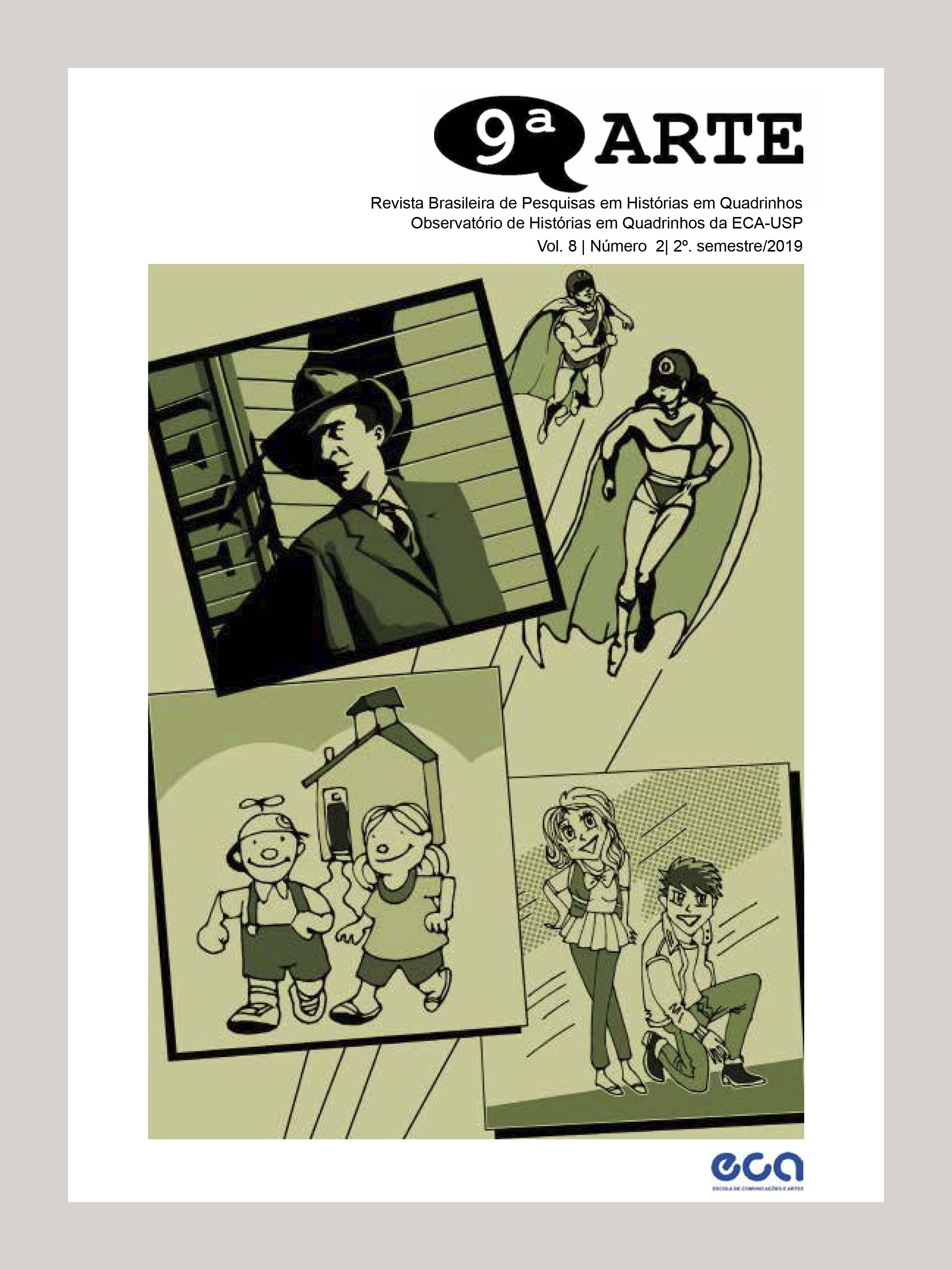Narrative structure in wordless comics
DOI:
https://doi.org/10.11606/issn.2316-9877.v8i2p9-35Keywords:
Wordless comics, The arrival, Tan, Shaun (author), Comics - Narrative structureAbstract
Applies the terminology and the methodologies laid out in the book Narrative structure in comics (POSTEMA, 2018a) to the graphic novel The arrival, by Shaun Tan (2006), considered as a wordless comics. Defends that abstraction and simplification are hard to find in Tan’s chosen style and that much of the meaning that his images accrue comes from the visual style he uses, which resembles old photographs. Due to the snapshot / photographic quality of Tan’s images, most panels, like photographs, seem to represent just an instant, only capturing the sense of time passing across several panels. The arrival does not employ any grids, as it is laid out with generous, clear gutters, so the format of closely adjacent panels without any blank space between them, and neither uses insets, but only several implied insets of frames within frames. The article also uses two comic stories by Fabio Moon to illustrate the concept of sequences.
Downloads
References
GROENSTEEN, Thierry. The system of comics. Jackson: University Press of Mississippi, 2007.
ISER, Wolfgang. The act of reading: a theory of aesthetic response. Johns Hopkins Press, 1978.
JACOBS, Dale. Graphic encounters: comics and the sponsorship of multimodal literacy. New York; London: Bloomsbury, 2013.
KUPER, Peter. The system. Oakland, CA: PM Press, 2014.
MATHIEU, Marc-Antoine. 3 secunden. Berlin: Reprodukt, 2012.
MCCLOUD, Scott. Understanding comics. New York: Kitchen Sink; HarperCollins, 1994.
MOEBIUS. Arzach. Oberon, 1982.
MOON, Fábio; BÁ, Gabriel. De: Tales: stories from urban Brazil. Milwaukee, OR: Dark Horse Books, 2010.
MORGAN, Harry. Graphic shorthand: from caricature to narratology in twentieth-century bande dessinée and comics.” European Comic Art, v. 2, n. 1, p. 21-39, 2009.
POSTEMA, Barbara. Establishing relations: photography in wordless comics.” Image and Narrative, v. 16, n. 2, p. 84-95, 2015.
POSTEMA, Barbara. Estrutura narrativa nos quadrinhos: construindo sentido a partir de fragmentos. São Paulo: Peirópolis, 2018. (a)
POSTEMA, Barbara. Longlength wordless books: Frans Masereel, Milt Gross, Lynd Ward, and beyond. In: BAETENS, Jan; FREY, Hugo; TABACHNICK, Stephen E. (ed.) The Cambridge history of the graphic novel. Cambridge University Press, 2018. (b)
POSTEMA, Barbara. Mind the gap: absence as signifying function in comics. 2010. Thesis (Doctorate in Philosophy) – Michigan State University, East Lansing, MI, 2010.
POSTEMA, Barbara. Structure narrative in comics: making sense of fragments. Rochester, NY: RIT Press, 2013.
RUNTON, Andy. Owly: helping hands. San Diego, CA: Top Shelf, 2007.
SMOLDEREN, Thierry. The origins of comics: from William Hogarth to Winsor McCay. Jackson: University Press of Mississippi, 2014.
TAN, Shaun. The arrival. Melbourne: Arthur A. Levine Books, 2006.
TAN, Shaun. A chegada. São Paulo: Edições SM, 2011.
VARON, Sara. Robot dreams. New York; London: First Second, 2007.
WOODRING, Jim. Weathercraft. Seattle, WA: Fantagraphics Books, 2010.
Downloads
Published
Issue
Section
License
Copyright (c) 2019 Barbara Postema

This work is licensed under a Creative Commons Attribution-NonCommercial-ShareAlike 4.0 International License.

Este obra está licenciado com uma Licença Creative Commons Atribuição 4.0 Internacional.



